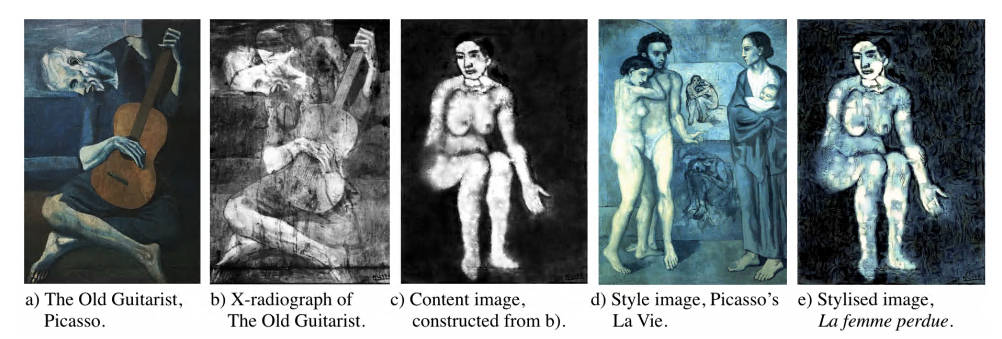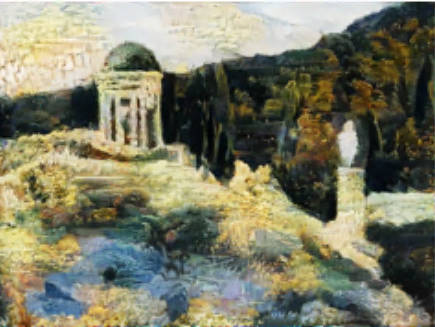| Raiders Of The Lost Art |
| Written by David Conrad | |||
| Saturday, 21 September 2019 | |||
|
Don't blame me for the title - it's the title of the research paper! Can we recover lost paintings using a little AI? The answer seems to be yes, but it really all depends what you mean by "recover". It is a sad fact that many artists reused canvases. They either didn't like the painting they had created and decided to paint over it or, more likely, they couldn't afford to buy another canvas. We often know about paintings that have been over painted because the are revealed by x-ray examination. This gives us a very good idea what the geometry of the lost painting is like, but no clear idea of what the complete work would have looked like. Now Anthony Bourached and George Cann, of University College London and Oxia Palus respectively, have tried to use neural network style transfer to create something that approximates what the artist might have painted over. It seems to work, but there are few samples to judge and, of course, the whole thing is subjective. Take the well known painting by Picasso - The Old Guitarist - x-rays reveal that there is an earlier painting of a nude. Applying a style to the recovered image yields a painting colored in the style of Picasso. Is it the right style? Is it how Picasso would have painted it? Who knows, but it look plausible. You might also agree with Picasso that the canvas was better used for The Old Guitarist rather than a fairly dull nude.
It is worth noting the x-ray images were manually edited to provide a good starting point, so some human subjectivity was employed early on. And why prefer the neural network to a human expert? Why not compare the style reconstruction produced by a human expert in Picasso's work to the neural network? After all, humans are pretty good at deep learning. My guess is that the intent is to try to create something more authoritative and personally I'm not sure that a neural network has that authority - but I do agree with the researchers comment that: "Our method of combining original but hidden artwork, subjective human input, and neural style transfer helps to broaden an insight into an artist’s creative process. Furthermore, it creates a human-AI collaboration which cultivates empathy with the creative potential of AI and its harmonious use as an artistic tool." I think that there are a lot more things that can be done with neural networks and art - as long as no-one is trying to sell the snake oil that they are deeply creative. That is somehow worse than trying to pass them off as intelligent, fully self-aware or in possession of a soul.
More InformationAnthony Bourached and George Cann Related ArticlesAI-Generated Painting Sells For $432,500 - A Deep Misunderstanding Christies To Auction AI-Generated Artwork Robot Art 2018 $100,000 To Win More Efficient Style Transfer Algorithm To be informed about new articles on I Programmer, sign up for our weekly newsletter, subscribe to the RSS feed and follow us on Twitter, Facebook or Linkedin.
Comments
or email your comment to: comments@i-programmer.info |
|||
| Last Updated ( Saturday, 21 September 2019 ) |



